View from the bus, on the way to Delphi
Left: Typical Greek terrain
Right: Photo stop!
A shop where rugs are weaved. Rugs and carpets made in Greece are commonly sold to Canada, France and other parts of Europe.
Left: Display of rugs
Right: Can you spot the error?
Left: Greek macaroni with beef stew
Right: Mixed plate comprising of fried cheese, spinach pie (aka Mousaka), yoghurt with olives and I can’t remember what else. It all tasted the same after a while…
Left: A tray of Greek desserts
Right: Tiramisu
The archaeological site of Delphi
Left: Treasury of Athenians (a place where the offerings and other valuables were stored)
Left: An Ionic column (if you’re interested, do an online search for the difference between Ionic, Doric and Corinthian columns)
Right: View from mid-way up the site
Still hiking up the site…


I wore my cap as it got hotter as we climbed. Cam-whoring to relieve tiredness.
Left: Ruins of the Temple of Apollo
I felt the ruins looked very majestic against the mountainous backdrop.
Left: The bull was a sacred animal to the Crete people
Many spectacular statues are now stored at a museum next to the archaeological site.
Left: View from the bus on our way to Olympia the next morning.
Right: A shrine by the road side. There’re many shrines along Greek roads – some were built to remember people who died in accidents at the spot, some built by survivors of accidents to give thanks to God, some were built to commemorate old churches that have been pulled down, and some were built to let pple know there’s a church nearby.
More shrines. Reminds me of how the people of the Old Testament would build shrines along their journeys to commemorate God’s greatness. BTW, 98% of Greeks are Orthodox Christians. This is the first time I visited a country of Orthodox Christians. Very interesting.
The Sanctuary of Olympia. The site of Olympia, in a valley in the Peloponnesus, has been inhabited since prehistoric times. In the 10th century B.C., Olympia became a centre for the worship of Zeus. The Altis – the sanctuary to the gods – has one of the highest concentrations of masterpieces from the ancient Greek world. In addition to temples, there are the remains of all the sports structures erected for the Olympic Games, which were held in Olympia every four years beginning in 776 B.C.
Left: The entrance to the ancient Olympic stadium. Note – we learnt from our guide that the ancient Greek stadiums did not have seats for spectators, who would stand on the slopes to watch the race. Stadiums with seats are only typical of Roman stadiums. In addition, the Greeks learnt how to use bricks in their construction from the Romans, while the Romans picked up knowledge on constructing statutes from the Greeks.
Right: Iceman reaching the finishing line!
Left: Temple of Hera – an ancient Doric Temple. The Temple of Hera was destroyed by an earthquake in the early 4th century AD, and never rebuilt. In modern times, the temple is the location where the torch of the Olympic flame is lit, by focusing the rays of the sun. The temple was dedicated to Hera, the wife of Zeus and one of the most important female deities in Greek religion.
Right: The Philippeion in the Altis of Olympia was an Ionic circular memorial of ivory and gold, which contained statues of Philip’s family, Alexander the Great, Olympias, Amyntas III and Eurydice II. It was made by Athenian sculptor Leochares in celebration of Philip’s victory at Battle of Chaeronea (338 BC).
From the Museum –
Left: How ancient ladies kept their modesty – the weights would prevent their skirts from flying up when the wind blows.
Right: Ancient bronze helmet
Self-explanatory…
Left: Ancient dolls
Right: Excavated statues
Left: Lamb
Right: Really oily Greek salad (Athena sure gave Greece damn a lot of olives man…)
Photo stop at the smelly Port of Nafplio
Our dinner… doesn’t it look really familiar?


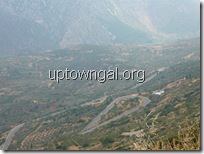








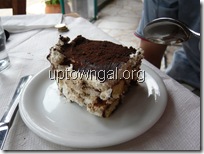






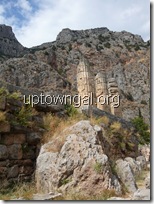



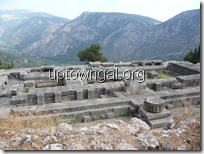


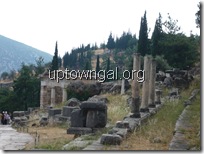








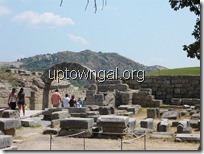



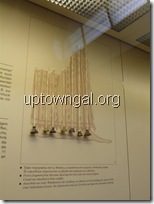

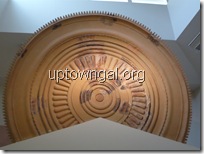

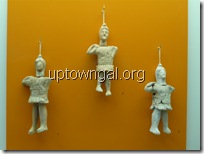
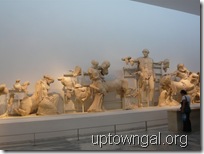





0 Responses to “Greece Highlights – Delphi & Olympia”